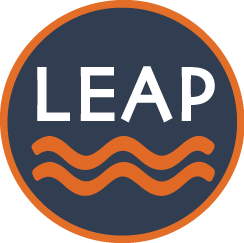This is the fourth in a series of four posts. Many of these glossary terms are used in the whitewater community, along with some that are specific to LEAP and our sister company, Orange Torpedo Trips (OTT). This week we have more LEAP-specific terms. Let us know if you want more!
Sinus cleanser: A fast, hearty swim that may have gotten water up your nose.
River ready: Geared and suited up to get on the river, often a command to make sure people are in their swimsuits, PFDs, and with sunscreen on.
Paddle raft: The raft that comes with us on programs carrying lunch items, some gear, and participants who want a paddle raft experience.
Mr. Kitty: The catamaran type raft that that runs ahead of us on programs to set up camp and carry gear.
Johnny: The portable toilet we use on programs made of a metal box and a standard toilet seat- very comfy, always has a great view.
Jane: The portable pee tent we occasionally use on programs for the ladies made of a bucket and a standard toilet seat- very convenient for nighttime bathroom runs.
Carl: A pump used for inflating IKs, named for the brand Carlson.

